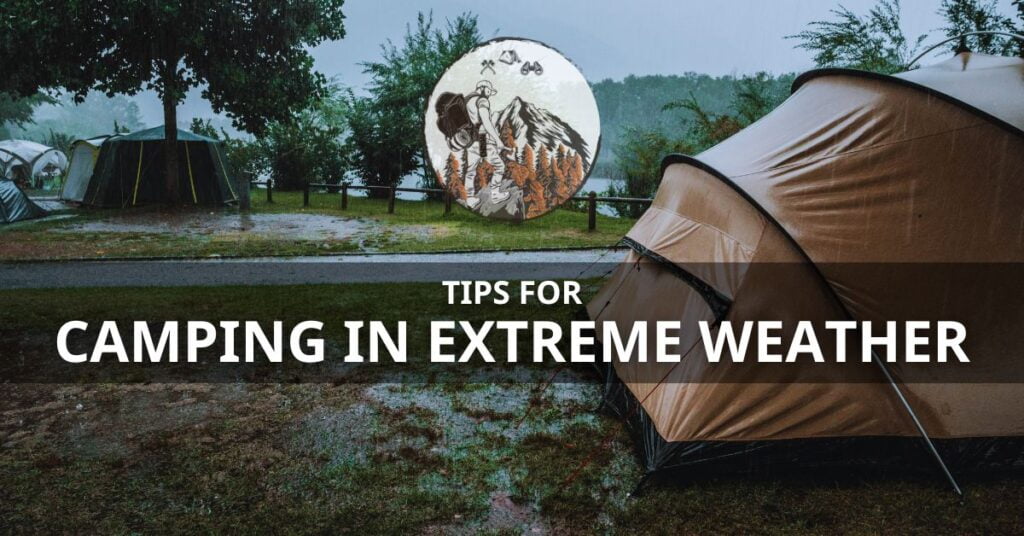Winter camping is an exhilarating way to experience the great outdoors in its most serene and immersive state. The crisp air, the pristine snow, and the peaceful landscapes beckon the intrepid camper. However, to fully embrace the beauty of winter camping, it’s crucial to stay warm and dry. One of the most effective ways to do this is by properly insulating your tent.
Ensuring that your tent is properly insulated can make the difference between a memorable trip full of adventure and one you’d rather soon forget. In this comprehensive guide, we will walk you through the best practices and tools to insulate your tent effectively, providing you with the comfort and safety you need in cold winter conditions.
Ready to transform your winter camping experience? Let’s dive into the details of how to insulate a tent for winter camping.
Table of Contents

Understanding Insulation for Your Tent
Not all insulation materials are created equal, especially when it comes to winter camping. Exploration into different types of insulating materials such as foam pads, closed-cell foam, and even space blankets will help campers make informed decisions.
Your goal is to select materials that have a high R-value and are lightweight to keep unnecessary bulk out of your pack.
Different Types of Insulation Materials
- Foam Pads: These are often the go-to for many campers because of their availability, cost-effectiveness, and semi-rigid structure that also provides some cushioning.
- Closed-Cell Foam: These have a higher R-value, reflectivity, and ability to trap air, making them more insulative against the cold ground.
- Space Blankets: These ultra-lightweight, ultra-reflective blankets can be used in combination with other materials for additional insulation.
Factors to Consider When Choosing Insulation
- R-Value: This is the measure of a material’s resistance to heat flow. The higher the R-value, the better its insulating properties.
- Weight and Portability: You’ll be carrying your insulation with you, so you’ll want something light and easy to pack.
- Durability: Insulation that can withstand the rigors of winter camping without tearing or puncturing is crucial.
Choosing the Right Tent for Winter
Selecting the correct tent is the first step to preparing for winter camping. Four-season tents are specially designed to handle harsh conditions, with sturdier poles, more robust fabrics, and less mesh to reduce airflow. They are the go-to choice for winter camping due to their ability to withstand snow loads and provide better insulation.
If you already have a three-season tent and don’t plan on camping in extreme winter weather, you can modify it to improve its insulation, but knowing when to upgrade to a four-season tent is important for your safety.
Four-Season Tents vs. Three-Season Tents: What’s the Difference?
Four-season tents are typically heavier and smaller in terms of floor space but are designed to be strong, durable, and well-insulated. They often feature more poles, sturdier fabrics, and a more geodesic shape to shed snow.
Three-season tents are generally lighter and larger, with more mesh and a less robust design. They are ideal for three-season use when snow and strong winds are not a concern.
Preparing Your Tent: The Groundwork
The foundation of a well-insulated tent begins with a solid plan and setup.
Clearing the Campsite and Setting Up a Solid Foundation
- Choose Your Campsite Wisely: Look for a flat spot to prevent rolling off a sleeping pad at night. If possible, camp near natural windbreaks like dense tree lines.
- Digging a Trench: In heavy snow, dig a trench around your tent to prevent snow from blowing in and to create an insulating layer around the tent walls.
- Laying Down a Tarp: Once your tent’s footprint is set, cover it with a tarp to provide a moisture barrier and further insulation from the ground.
Inspecting and Repairing Any Damages
Before winter camping, it’s important to check your tent for any damage and make the necessary repairs.
- Check Seams: Make sure all seams are sealed to prevent drafts and water from entering.
- Look for Leaks: Test your rainfly and sides for leaks. Apply seam sealer if needed.
- Repair Tears: Use patch kits to repair any tears in the fabric to maintain the integrity of your tent’s insulation.

Step-by-Step Insulation Process for Your Tent
With the foundation set, let’s look at how to prepare the inside of your tent for warmth.
Layering the Tent Floor with Insulation
- Use Specific Camping Mats: Place your insulated camping mats like closed-cell foam or self-inflating air pads on the tent floor. These will not only provide comfort but also crucial insulation from the cold ground.
- Double Up if Necessary: In extremely cold conditions, layer multiple mats with foam on the bottom to protect against the ground’s cold and air-filled pads on top for comfort.
Adding Insulation to the Tent Walls
- Line the Walls: Attach insulating materials to the wall panels, making sure to leave enough space for breathing to prevent condensation inside the tent.
- Use Clip-on Accessories: Many tents have clip-on shelves or mesh storage that can be used for additional insulation by hanging materials over them.
Insulating the Tent Ceiling
- Hang a Space Blanket: Drape a space blanket over the tent’s ceiling or use it with a few inches of airspace for optimal insulation.
- Consider a DIY Rafter System: If you’re expecting frigid temperatures, hanging a layer of insulation from a simple paracord rafter system can create an additional thermal layer in your tent.
Sealing and Draft Prevention
Drafts are the enemy of warmth in a winter camp. Here’s how to keep them at bay.
Using Weatherstrips and Sealants
- Inspect the Zippers: Lubricate zippers with silicone to keep them from freezing and to maintain their smooth operation.
- Apply Sealants: Use malleable sealants around your tent’s windows and meshes to keep out drafts and moisture.
- Weatherstrip the Door: Use weatherstripping on the door zipper to create a solid draft seal.
Insulating the Tent Openings
- Use Flaps: If your tent has them, seal the flaps over windows and vent openings to prevent drafts.
- Insulated Door Options: If you can, opt for a tent with an additional insulated door cover for extra warmth.
- Consider a Vestibule: Create a vestibule using a tarp to further insulate the main entrance and store gear away from the living space.
Additional Tips for Warm Winter Camping
There are several additional measures you can take to ensure a toasty night’s sleep.
Using Insulated Sleeping Pads and Bags
- The Sleeping System: Invest in a good sleeping bag with a low-temperature rating and pair it with an insulated sleeping pad.
- Layer with Liners: Consider using a liner inside your sleeping bag for added insulation.
Creating a Warm and Cozy Sleeping Environment
- Heat Rocks or Water Bottles: Place hot rocks or water bottles inside your insulated pad cover for added warmth.
- Bring Insoles: Place insulative insoles like air-filled foam under your feet for extra comfort and warmth inside the tent.
Tips for Staying Warm During the Night
- Eating a Hot Meal: Ingesting hot foods or drinks just before bed can help keep your body warm during the night.
- Choose the Right Campsite: Avoid camping in low-lying areas where cold air settles or under trees where snow might fall on your tent.
- Layer Clothing: Wear your insulating layers to bed, and keep a moisture-wicking layer next to your skin to stay dry.
Conclusion: Insulation Equals Safety and Comfort
Insulating your tent for winter camping is an art that combines science and preparedness. By following the steps outlined in this guide, you are well on your way to creating a warm and cozy haven in even the coldest of conditions. Remember to test your gear and techniques in controlled environments before heading out on your cold-weather adventures, and always prioritize safety.
Take the time to choose the right insulation materials, prepare your tent, seal it from drafts, and enjoy the warmth of your well-insulated camping oasis.
Happy camping, and may your winter journeys be filled with warmth and wonder!
Q. Can I use a three-season tent in winter?
It is possible to use a three-season tent in mild winter conditions with the right preparation. However, it’s safer and more comfortable to use a four-season tent for severe winter weather.
Q. How do I properly insulate the tent floor?
Use an insulated ground pad with a high R-value or layer multiple pads for maximum insulation.
Q. What are some of the best ways to insulate a tent for winter camping?
There are a few different ways to insulate a tent for winter camping. Some of the best methods include using a tent with built-in insulation, using a tarp to create an insulated floor, using blankets and pillows to insulate the walls and ceiling, and using a camp stove to heat the tent.
Q. What type of insulation should I use?
There are a few different types of insulation that can be used. Some of the most common types include fiberglass insulation, foam pad insulation, closed-cell foam, space blankets, and carpets.
Q. What are some of the most important things to consider when winter camping?
There are a few different things to consider when winter camping. Some of the most important things include insulation, hydration, and ventilation. It’s also important to bring along plenty of food and water, as well as a first-aid kit.
Q. What are some of the best ways to stay warm while winter camping?
There are a few different ways to stay warm while winter camping. Some of the best methods include taking breaks during the day to warm up, wearing layers of clothing, and using a camp stove to heat the tent.



